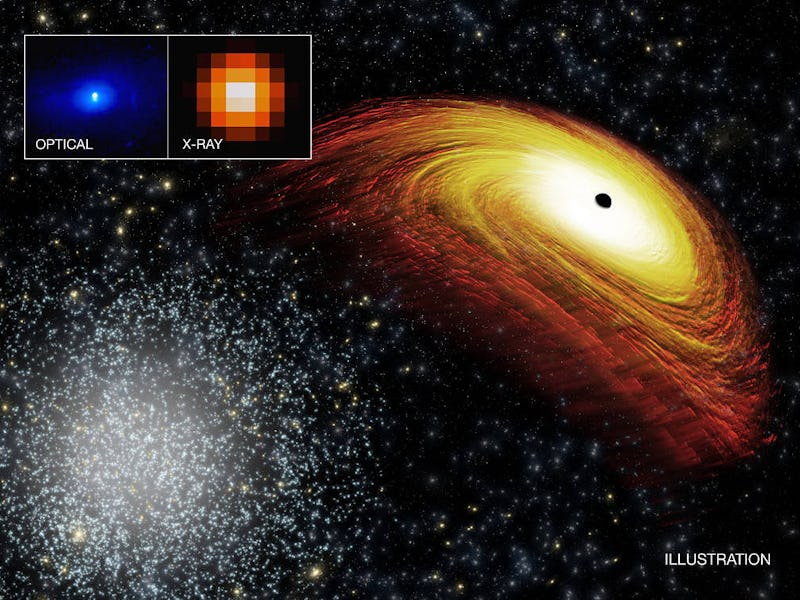Supermassive Black Holes generally stay in place, sucking up cosmic material in the center of galaxies and changing the way they evolve over time. Scientists are still understanding their function in the universe, but never, have they found evidence of one moving its central location before … until now.
Using the Chandra X-ray Observatory, a “renegade” black hole was found 3.9 billion light-years away in an elliptical galaxy, but instead of being in the center, it is offset by approximately 3,000 light years. The supermassive black hole (SBH) is an astounding 160 million times the mass of our sun, which might explain why it is offset. The announcement was made by NASA this month.
Scientists believe the SBH is the result of two smaller SBHs that collided and during the merge, they “recoiled,” emitting incredibly strong gravitational waves that forced the black hole away from the center. This is evident from the noticeably different velocity the SBH has to its host galaxy. There is also evidence of the outer regions of the galaxy being manipulated by the SBH. Finally, there is evidence of accelerating star birth in the region — about several hundred times the mass of the Sun per year — that would be indicative of a collision.
A supermassive black hole is on the run in a distant galaxy.
Another, less popular theory, is that there are actually two separate supermassive black holes in the center of the galaxy, but one of them is growing too slowly to have any detectable radiation from such a distance.
More data is needed to conclude these theories, but the new information sheds light on the enigmatic properties of SBHs, which are still a very mysterious phenomenon for astronomers.
